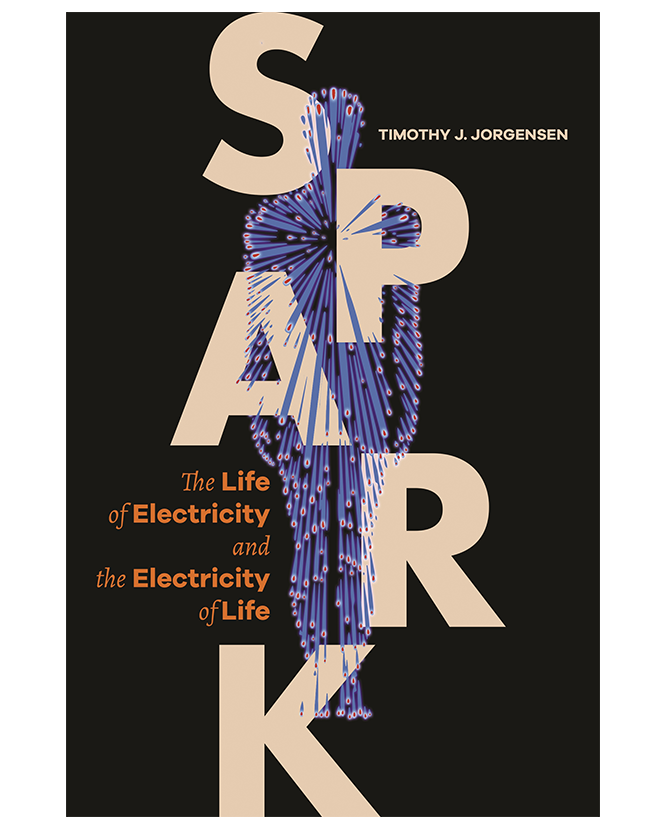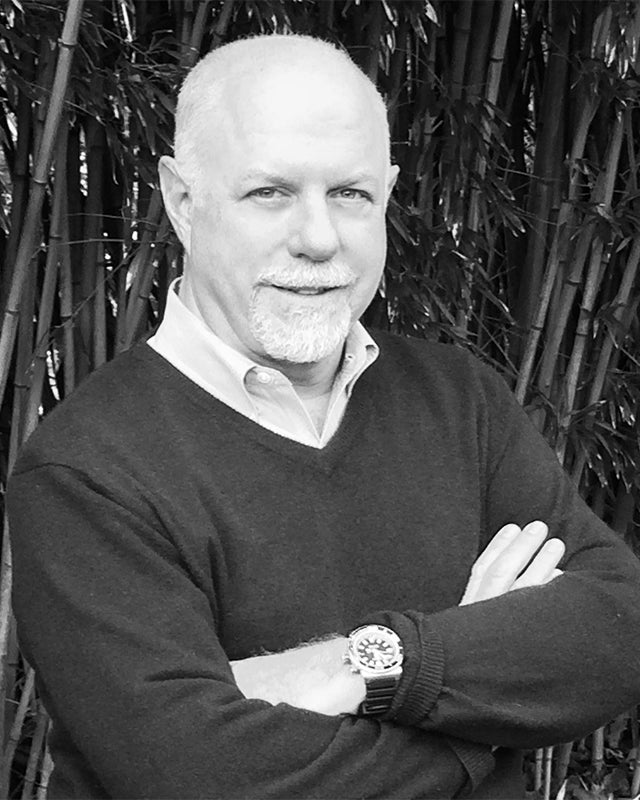Spark: The Life of Electricity and the Electricity of Life
Posted in GUMC Stories | Tagged electricity, faculty books
(November 30, 2021) — At its very basic definition, electricity is defined as “stationary or moving electric charges,” but as Georgetown’s Timothy Jorgensen, PhD, MPH, knows so well, electricity is the “foundation of life.”
Following the publication of his first critically acclaimed and award-winning book “Strange Glow: The Story of Radiation” about the science and history of radiation, Jorgensen sets out to amaze again with his new and exciting tale of electricity from a biological perspective: “Spark: The Life of Electricity and the Electricity of Life” (2021, Princeton University Press, PUP).

In his review of the book for The New Yorker, Jerome Groopman, MD, describes “Spark” as a “wide-ranging tour of electricity’s role in biology and medicine.” Jorgensen’s aim “is to show us that every experience we have of ourselves — from the senses of sight, smell, and sound to our movements and our thoughts — depends on electrical impulses,” Groopman writes.
Jorgensen explores the full circle of the human experience with electricity, from static electricity to brain circuitry, and delves into everything from the phenomenon that powers our everyday lives to the medical benefits that a cohort of flowing electrons can deliver. But he also weaves the revelations of electric science with the personalities forever associated with it — think Benjamin Franklin and Elon Musk.
“Electricity is a powerful force of nature that everyone deals with to one extent or another,” Jorgensen writes. “If we all become a little more knowledgeable about it, our society can use electricity’s many powers more wisely.”
We asked Jorgensen, a professor of radiation medicine and biochemistry, some basic questions about his new book, described by Publisher’s Weekly as “a sparkling reminder of the strange wonders of life. ”

- What motivated you to write “Spark”?
My previous book, “Strange Glow: The Story of Radiation,” was critically acclaimed and received several awards and distinctions, so my publisher was encouraging me to submit another book proposal. But I didn’t want to write a sequel to “Strange Glow.” I felt that I had said everything that needed saying about radiation in the first book. But radiation and electricity are closely related scientific fields, with many scientists having a foot in both worlds. For this reason, I devoted some brief passages in “Strange Glow” to discussing how electricity works. Ironically, despite their being brief, the electrical sections of the book attracted a lot of interest. In fact, Natural History magazine published an excerpt from “Strange Glow” in one of its issues. When I saw the part they chose to publish, I was astounded to see it was an electricity section that included nothing about radiation. Also, some of the feedback I was receiving from the book’s readers had to do with electricity rather than radiation. I told this to my wife, Helen, and she was the one who suggested I write a book that was similar in style to “Strange Glow,” but about electricity rather than radiation. So I pitched my wife’s book idea to the publisher and the editors really liked it. I have to give Helen all the credit.
- How long did you work on this?
I worked on the book very slowly, just an hour or two a day, for over three years. It would likely have taken me four years or more, but the one-year COVID lockdown allowed me to make a mad dash to the finish line. For me, that was the only positive outcome of the lockdown.
- What was the most fascinating thing you discovered?
I discovered that new electronic devices called “advanced prosthetics” are quickly becoming extremely sophisticated. These advanced prosthetics, which currently are in the research phase, are electrically connected to the amputee’s nervous system by various electrical means. Such brain machine interfaces (BMIs) enable an amputee to make the prosthetic move at will merely by thinking about it. And the movements include even fine motor skills, like the finger movements needed to play a piano. The heavy weight of these advanced prosthetics and their short battery lives are still practical problems that need to be dealt with, but researchers are on a fast pace to solve these problems very soon. I think people who think of such prosthetics as “futuristic” don’t fully understand how far along these prosthetics are right now. It’s truly fascinating work with the potential to transform the quality of people’s lives.
- Describe who would like this book?
The book explains electrical science from a biological perspective, focusing on the properties of electricity that are most relevant to human health. It is a book that should interest any layperson who is curious about things such as lightning, electric eels, heart pacemakers, brain waves, electric chairs, deep brain stimulation, electroconvulsive therapy, or even artificial intelligence. It is also a book that even an electricity specialist could read in order to learn the current scientific happenings in other electrical specialties. The book is written in a conversational style and conveys its scientific information through various human-interest stories, rather than by simply reciting facts. I think, because of its innovative style, most people will find the book fun to read.
- Are you working on a new project?
The short answer is no. But as it happens, in doing the research for “Spark,” I encountered a lot of interesting research into how electricity produces sound signals and vice versa. Humans can hear just a small portion of the sound spectrum. But the sounds that are out of our hearing range — from infrasound made by wind turbines, to ultrasounds used in diagnostic imaging — can be detected by some animal species. And this entire range of sound is of potential interest to human health. So who knows, in three or four years I may be releasing a book about the science of sound from biological and health perspectives. I think it could be a good idea for a book — but first I need to run it by my wife.
